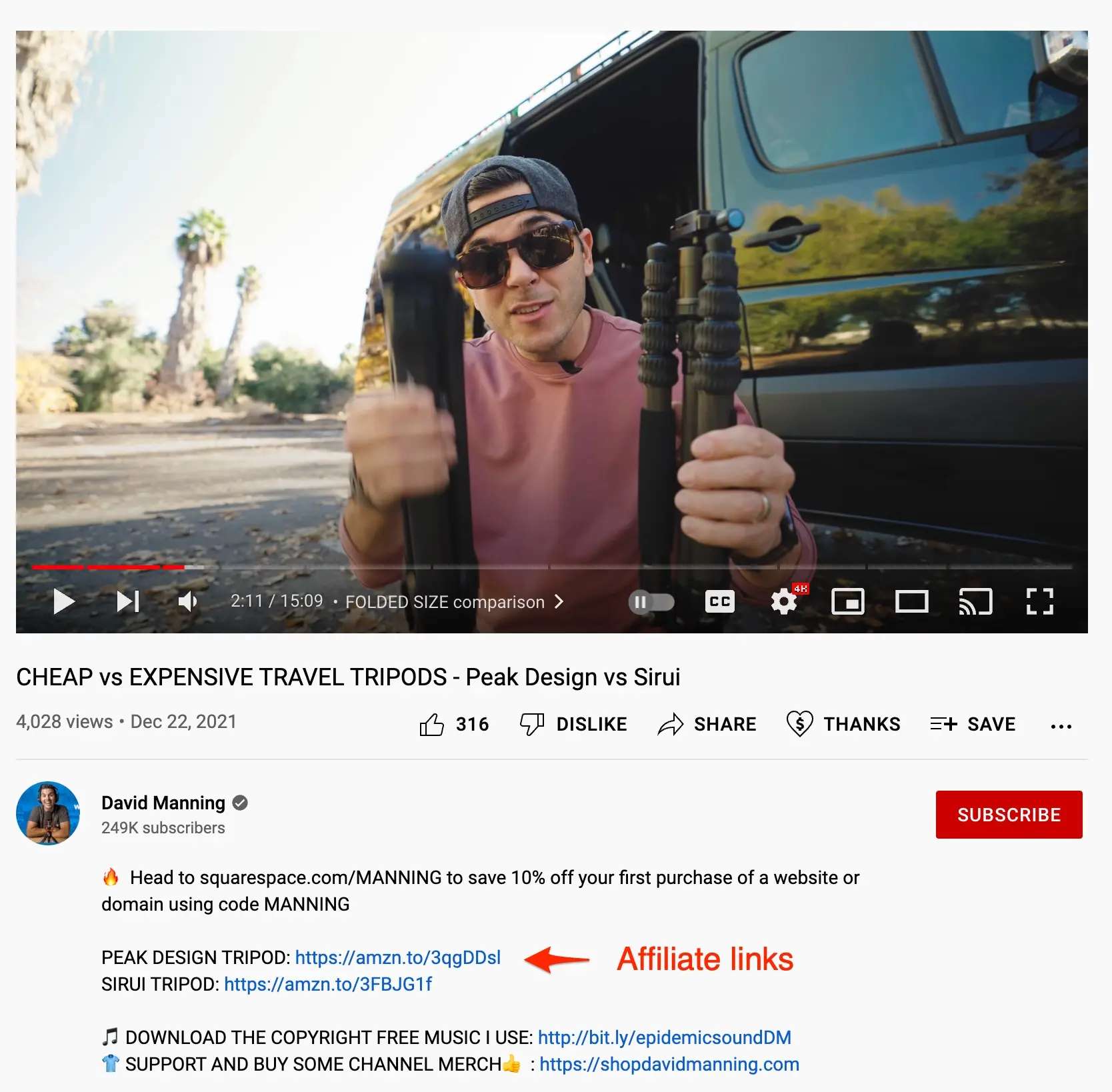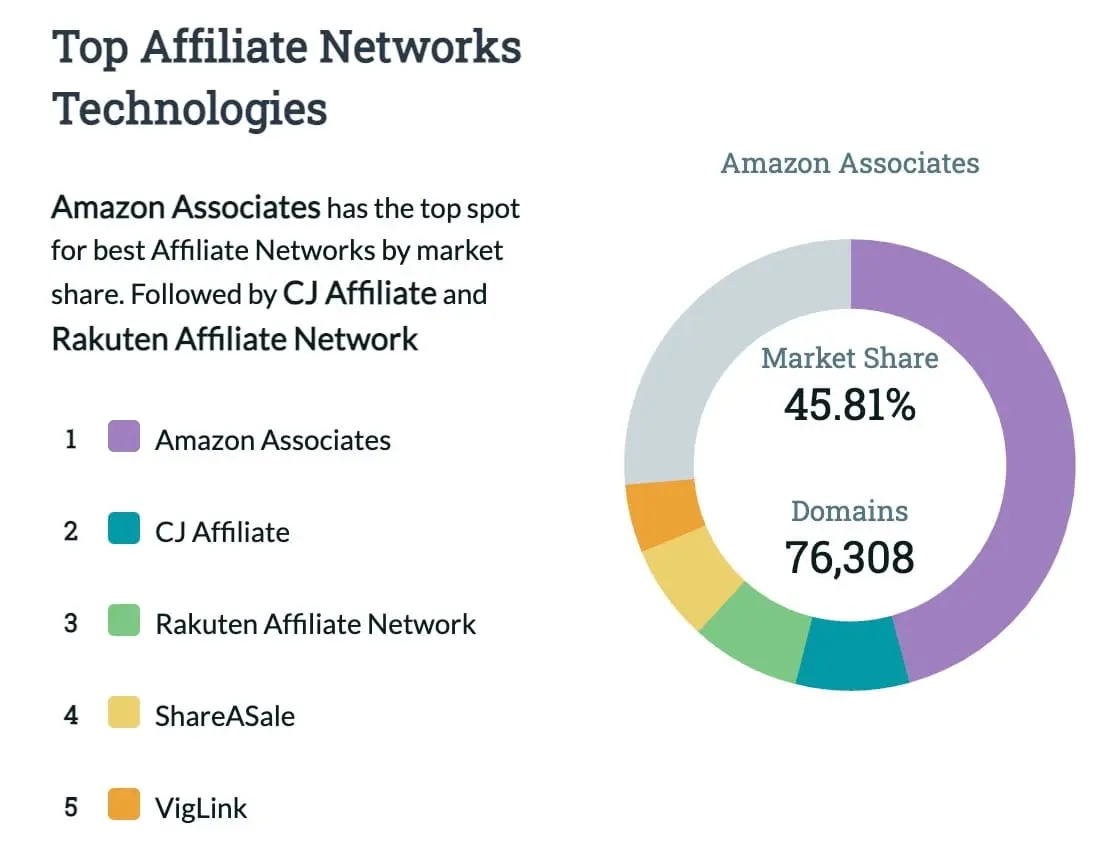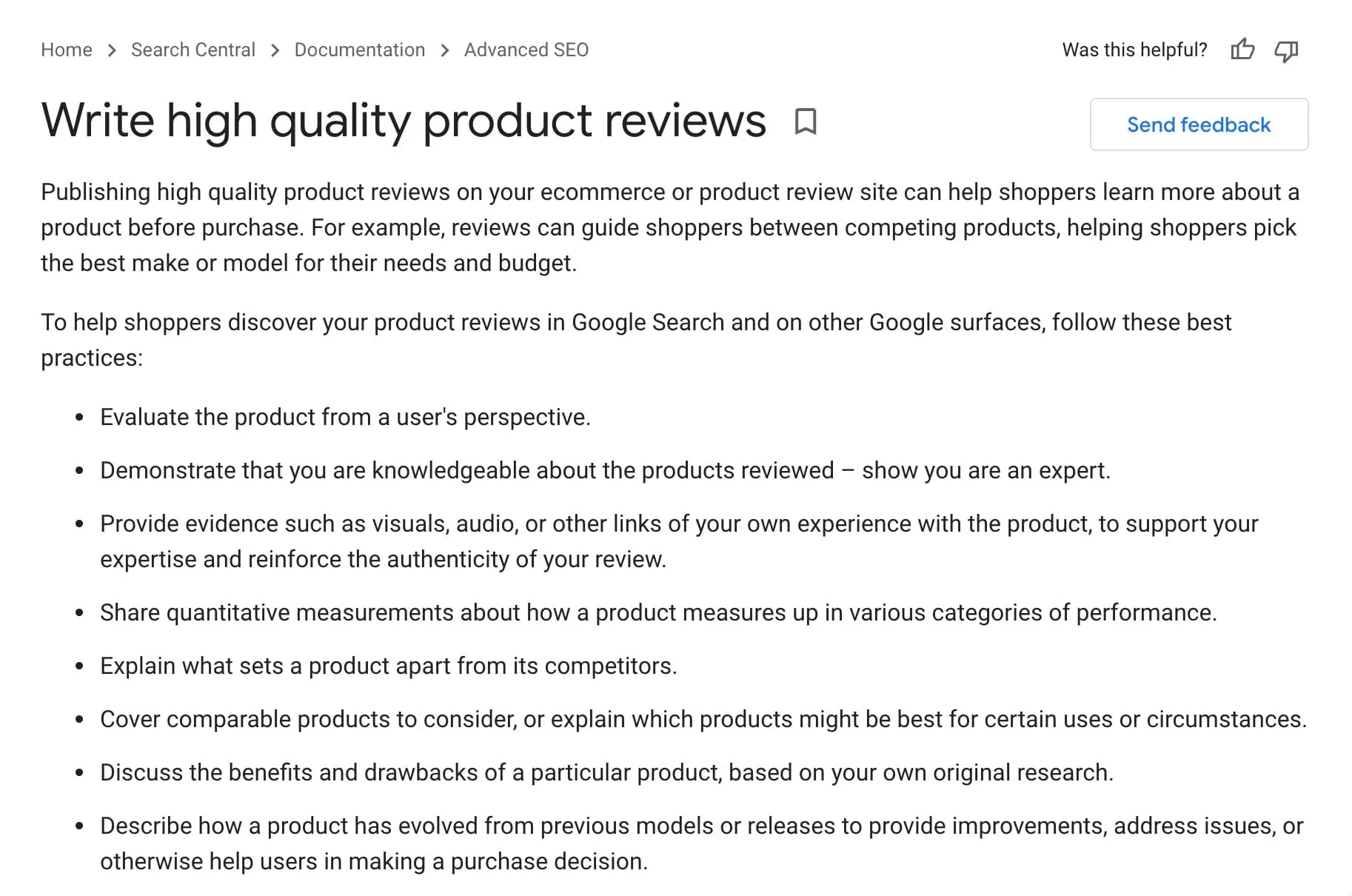Want a great way to earn a sustainable income online? Then it’s time to learn affiliate marketing. Affiliate marketing is one of the most popular channels used by companies to drive sales, leads, and brand awareness.
As an affiliate marketer, you can earn money subtly driving your followers towards specific products and services. Every time your advertising efforts generate sales for a company you partner with, you earn a commission.
You can even create passive income with affiliate marketing, as the affiliate links in your blogs, videos, and articles can drive sales as you sleep.
Actually, affiliate marketing is one of the best ways to make money from a blog. A good example is this blog.
Besides getting leads for marketing services and selling our digital marketing courses, we also make money by promoting other products related to digital marketing.
As you’ll read below, to make this successfully we only recommend high-quality products that we use ourselves. This is the best advice for beginners to affiliate marketing. Successful affiliate marketers never promote products that don’t provide real value to their users.
This step-by-step guide will give you all the tools you need to become an affiliate marketing expert.
What Does An Affiliate Marketer Do?
Affiliate marketers promote specific products or services on behalf of another brand and earn a commission every time a sale is made. You don’t design an offering yourself, but encourage other people to check out the companies you’re partnering with.
Generally, your affiliate partner will track your connection to a sale by giving you a special link or discount code which ties you to each affiliate transaction.
You can choose to work with dozens of smaller brands as an affiliate marketer or pluck particular products you want to promote from a marketplace like Amazon.
While some companies will have specific requests for how you advertise their products or services, others will allow you to spread awareness through various channels, including emails, blogs, and videos.
10 Steps to Become an Affiliate Marketer
- Learn affiliate marketing fundamentals
- Choose your marketing channels
- Find what products to promote
- Calculate how much money you can make
- Find your unique angle
- Learn how to write great product reviews
- Learn from competitors
- Create a content marketing strategy
- Start creating content
- Rinse and repeat
1. Learn affiliate marketing fundamentals
Before you can make money with affiliate marketing, you need to understand the fundamentals. While affiliate marketing is widely regarded as one of the most accessible ways to make money online, it does require a certain level of commitment and expertise.

Enrolling in an affiliate marketing course will help to get you on the right track. Make sure your course covers everything you need to know about becoming an affiliate. Important topics to cover include:
- The essential skills of affiliate marketing, like content creation and communication.
- How to research and choose the right affiliate products to promote.
- Where to build your reputation as an affiliate.
- How to find and use the best platforms for affiliate marketing.
- Which affiliate marketing programs are the most successful.
- How to create and use links as an affiliate.
As the digital marketing world evolves, you may need to update your education from time to time.
Investing in additional courses every so often will ensure you’re staying ahead of the curve with things like new market trends, promotional techniques, and even industry rule changes.
2. Choose your marketing channels
The course you choose to learn affiliate marketing basics will outline some of the available marketing channels you can use.
Many affiliates use a combination of platforms to improve their chances of reaching a wider audience. The most common platforms are:
Your own website: With your own website and blog you can create a community of loyal followers to direct and share your affiliate links with.
Blogs are ideal for affiliate marketing because they can offer a source of passive income. Your blogs, when written well, and optimized for the search engines, can constantly attract, and convert new customers, long after you’re finished writing them.
Social media: Affiliate marketing is extremely common on social media. You’ve probably noticed professional “influencers” suggesting products to their customers on Youtube, Instagram, and Facebook. This is a form of affiliate marketing.

The right social channels can be a fantastic environment for building relationships with your affiliate community.
Email marketing: If you have an email list, you’ll be able to send suggestions of potential products and services to customers you segment by interest or location. Of course, you’ll need to build your email list first. Often, blogging and email affiliate marketing go hand-in-hand.
3. Find what products to promote
Most affiliate marketing experts recommend choosing products you’re genuinely interested in to promote. It’s much easier to generate excitement for a product or service if you’re passionate about it. However, it’s important to think about what’s going to generate the most income too.
Start by considering what kind of industries you’re interested in, such as health and beauty, sports, technology, or pet supplies. From there, you can look into specific niches where you can build an engaged audience of potential customers.
Once you have a basic industry in mind, there are a few ways you can look for trending products:
Google search: Looking for “affiliate marketing program + your niche” in Google will show you some of the available programs you may be able to join. Even if you don’t choose to interact with any of these projects, you might get an idea of what kind of products companies are looking for affiliates to help them sell.
Check Facebook Marketplace, Amazon and eBay: Checking the “trending products” sections of the Facebook marketplace, Amazon and eBay can show you what kind of exciting items your customers are interested in right now.
These marketplaces also have their own affiliate marketing programs, so you can also begin your new career with them too.
Look at Google trends: Google trends can help you to see whether interest in a particular search, such as “glitter eye shadow” is increasing or decreasing over time.
Search popular affiliate networks: Largest affiliate networks such as Shareasale, CJ, Rakuten, and VigLink have thousands of products to promote from high-quality merchants.

4. Calculate how much money you can make
Estimating how much money you can make as an affiliate with certain products is important because it helps you to determine whether your business opportunity is viable.
You’ll need to calculate how many sales you need to make each day, week, and month to maintain a good profit and a reasonable income. Notably, there are various ways to make money as an affiliate, such as:
- Pay per sales: The standard affiliate marketing structure. Here, the merchant pays you a percentage of the sale price of a product after they confirm your marketing efforts prompted a conversion.
- Pay per lead: These programs compensate affiliates based on the conversion of leads. Rather than being paid exclusively for sales, you earn an income every time the lead signs up to a newsletter, gets a trial of a product, or downloads a file.
- Pay per click: With a pay per click campaign, you’re compensated whenever someone clicks onto the merchant’s website using your unique link. It’s less common to find these kinds of programs today, as most merchants want to ensure they’re only paying for conversions.
5. Find your unique angle
It’s difficult to calculate the exact number of affiliate marketers working around the world today, but the US alone has more than 11K active affiliate programs. Simply put, you have a lot of competition.
If you’re going to captivate and convert your audience, you’ll need an angle. The more you can connect with your customers and build relationships with them, the more revenue you can potentially earn.
For instance, if you’re promoting keyboards for computers, and you notice most other keyboard affiliates write product reviews. Perhaps you could do something a little different? Instead of just publishing written reviews, why not make videos and podcasts too?
A wider range of content will help you to connect to a broader selection of customers. Not everyone in your target market will want to read articles, after all. It’s also important to demonstrate your expertise in a way that generates trust. For instance, you can:
- Highlight your background in your industry, talking about your time working at a keyboard manufacturing plant, or with one of the biggest brands in the industry.
- Work with influencers and other thought leaders to demonstrate your expertise through association. Doing co-reviews with influencers can also help to improve your reach.
- Stay authentic by only reviewing products you’re genuinely interested in. Don’t suddenly change the nature of your affiliate site just because of a change in market trends.
6. Learn how to write great product reviews
As you learn affiliate marketing techniques, you’ll discover a number of ways to showcase your products. You can make video how-to’s or write listicles showing off a number of items. One of the most effective tools you’ll have, however, is the product review.
A review allows your customers to see exactly how a service or product works, and it’s a chance to highlight your authority.

However, it takes time to learn how to write an excellent review. A good tip is to follow the guidelines given by Google, as this should boost your ranking potential. For instance:
- Evaluate the product from a user’s perspective: Design your review to make the reader or viewer feel like they’re stepping into your shoes and experimenting with the item themselves. The review should be completely authentic and demonstrate your own unique experiences.
- Demonstrate your knowledge: Highlight your expertise and explain why your customers should trust your insights. What’s your background in the industry? How does this product compare to other items you’ve reviewed?
- Use different kinds of media: Visuals, audio, links, and videos can all help to improve the authenticity of your review. You can also consider using quantitative data, like ratings, to help your customers better understand your feelings about a product.
- Compare and contrast: Highlight how the product is similar to other items in the same industry and discuss the benefits and drawbacks of that specific item. You can also discuss how a product has evolved from previous models or made improvements over the years.
- Try to answer customer questions: Identify the kind of decision-making factors that might drive your intended audience. Creating user personas and buyer profiles should help with this. For instance, a car review might highlight fuel economy or safety for family-oriented buyers.
Google also advises including links to other resources from both your site and other authoritative websites to help customers make the right decision.
7. Learn from competitors
If you’re new to affiliate marketing, one of the best ways to improve your skills is to learn from already successful people. Seek out the top affiliate marketing experts in your industry and find out how they promote particular products.
If you’re not sure who your competitors are, you can start by looking at influencers in your niche. Any influencer who also partners with companies and promotes their products is also an affiliate.
Competitor analysis tools are handy too. SEM Rush helps you to find other websites ranking for the same keywords as you – which may direct you to other affiliates.
You can also try tools like SpyFu, for insights into ranking companies in paid and organic search or Simialrweb.com to check out similar sites to yours.
Industry directories are excellent for finding competitors too, or you can simply type keywords into Google, or the names of the products you want to sell to see what pops up.
However, try not to simply copy-paste what other brands are doing. Add your own spin to any affiliate campaigns you create yourself.
8. Create a content marketing strategy
Affiliate marketing thrives on content. Unfortunately, amazing content doesn’t happen overnight, you need to work on it consistently. You’re going to need a plan for how you’re going to produce and promote your content. You can start with:
Getting to know your customers: Use customer personas and profiles for your target audience to determine what kind of content they’re likely to respond best to. Your buyer personas will also give you an idea of where you should be sharing your content.
Researching keywords: Learn how to perform keyword research to find competitive keywords for your niche and target audience. These keywords will help to drive your paid marketing campaigns and your search engine optimization strategies. Ideally, your content should be ranked as high as possible in the search results.
Creating a calendar: Plan how and when you’re going to publish your content. Your customer buyer personas should give you a decent idea of how frequently your customers are likely to be online on different channels, checking for content. Remember to plan for not just articles, but videos, social media posts, email marketing campaigns, and podcasts too.
Have in mind that your content calendar and plan may change over time as you learn more about your audience.
9. Start creating content
With your plan in place, you can begin creating content. Remember, the key here is making sure your content is as valuable and engaging as possible. Don’t just produce reviews sharing the same insights and information as countless other examples on the web. Give your content its own unique spin.
Look at NerdWallet, for instance. The site is an affiliate website for financial products, covering everything from insurance to credit cards.

However, the business doesn’t just roll out boring reviews – it offers a host of valuable guides, calculators, and tools intended to help people make better financial decisions. The Nerdwallet “how much house can I afford” calculator is a great example of how the company brings value to its followers.
10. Rinse and repeat
As you roll out your affiliate marketing content, make sure you have tools to track your campaigns’ success. Google Analytics, SEMrush, and similar solutions will help you to evaluate which of your content is performing best, so you know what you need to produce in the future.
Tracking everything from your traffic to the number of clicks you get on each link, your sales numbers, and even your brand awareness will give you insights into where you need to improve.
How Hard is it to Become an Affiliate Marketer?
Becoming an affiliate marketer is not hard – not with so many programs and tools to help you in today’s digital world.
However, it does take time, dedication, and commitment to make sure you’re a success. As an affiliate marketer, you need to be fully invested in connecting with your audience, building credibility for your brand, and reaching new customers.
Anyone can become an affiliate marketer with the right support, just don’t underestimate the work you need to put in to earn your fortune.




Leave a Reply